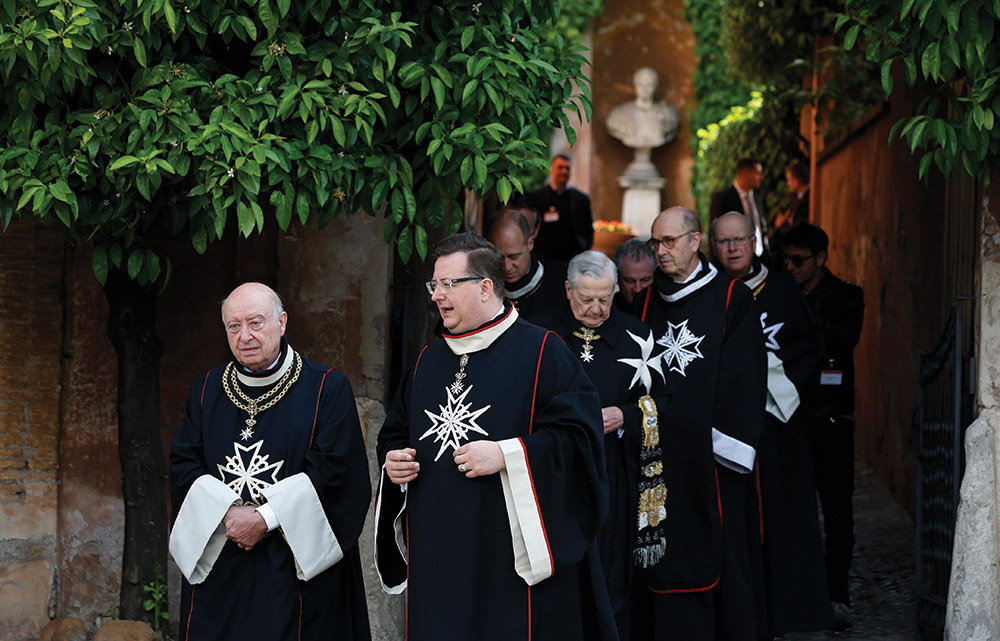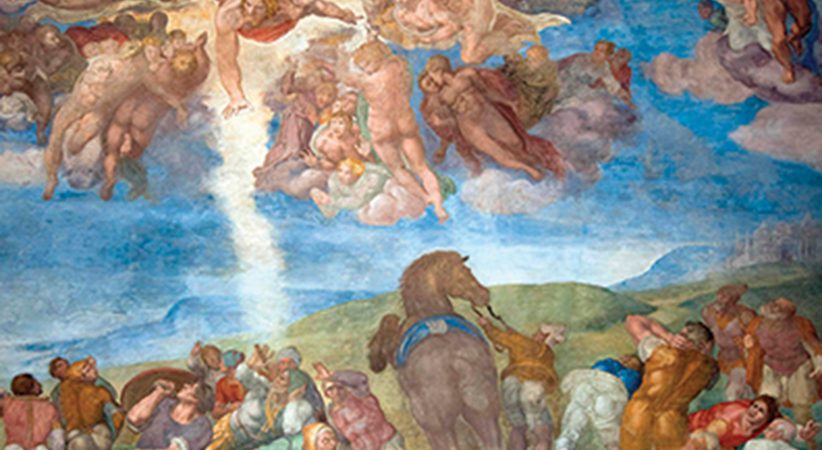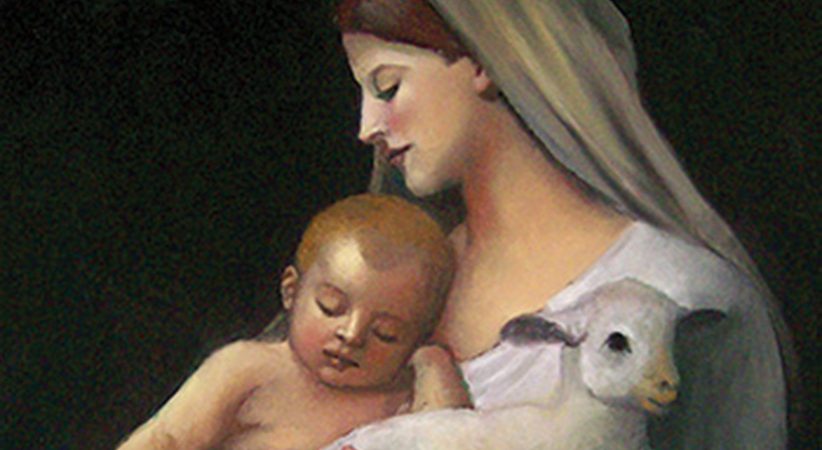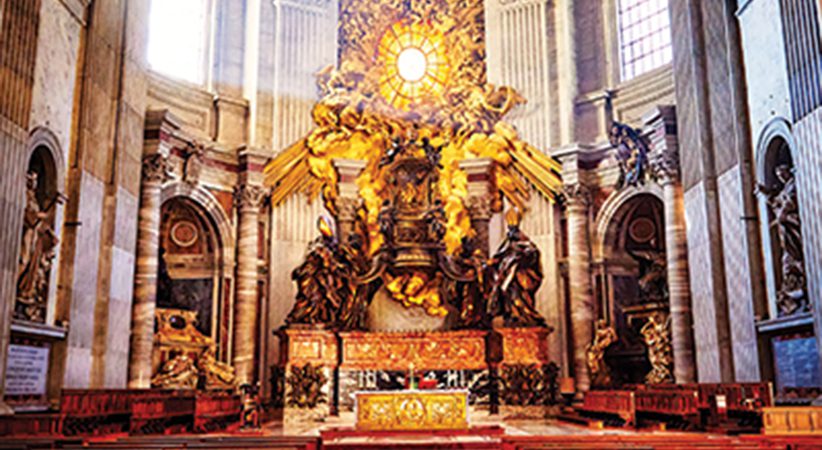Understanding Pain
Pastoral approaches to help those who suffer
Father John W. Love Comments Off on Understanding Pain
Our ability to sense pain is an evolutionary phenomenon that has the positive effect of helping us to avoid harm to self and to others. The negative aspects of pain are a necessary side-effect of this marvelous and fine-tuned evolutionary ability. The International Association for the Study of Pain (IASP) defines pain as “an unpleasant sensory and emotional experience associated with actual or potential tissue damage.”
In addition to breaking down pain into the two categories of “acute” and “chronic,” there are thought to be at least three different modalities of pain in the human body, and these include (1) nociceptive — a direct assault on the nerve — that is, a cut or gunshot wound; (2) inflammatory — “indirect” pain derived from swelling and/or damage of tissue and joints such as arthritis or sprains; and (3) neuropathic — pain which is often manifested within problems of the nerves themselves — for example, cerebrospinal and nerve-degenerative diseases.
Even with these helpful distinctions, there are competing theories about the origin, nature and perception of pain, a topic that has been examined by Greek philosophers, scientists and physicians. Aristotle noted that pain was not captured in just one of the sense organs (sight, smell, taste, hearing and touch), but that it seemed to be the antithesis of pleasure and could pervade the entire body. One scientific hypothesis proposes that pain begins through dedicated nerve pathways and receptors throughout the body that all lead directly to the brain (the “specificity theory”), while other models focus more on the opening and closing of specific nerve receptors in the dorsal (thoracic) spine called nociceptors, as in the so-called gate theory of pain as first championed in 1965 by two scientists, Patrick Wall and Ronald Melzack. More recent attempts to define pain as something more than a purely physical response are evident in the continued work of Melzack, who has proposed that the perception of pain is a multidimensional experience and is influenced not only by pain stimulus but also by cognitive and emotional factors, including the memories of prior painful experiences.
Spiritual Pain
Although analogous to the physical sensation of pain, I want to propose that there is such a thing as spiritual pain, sometimes described as anguish or torment. The idea that we suffer and endure pain in life is powerfully illustrated in the language of the “suffering servant” found in Isaiah 53:3-5:
“He was spurned and avoided by men, / a man of suffering, knowing pain, / Like one from whom you turn your face, / spurned, and we held him in no esteem.
“Yet it was our pain that he bore, / our sufferings he endured. / We thought of him as stricken, / struck down by God and afflicted. / But he was pierced for our sins, / crushed for our iniquity. / He bore the punishment that makes us whole, / by his wounds, we were healed.”
The language of the suffering servant comes to us from the second section of Isaiah as the author seeks to understand the ultimate direction and meaning of a process of purification and renewal during a time of testing. Christians understand the text in terms of the prophetic voice of Isaiah foretelling the suffering of Christ who will later redeem mankind through his own suffering and death on the cross.
Reflect for a moment on the pain of Christ in the Garden of Gethsemane prior to his suffering and death. This heart-wrenching but vivid example of the effect of extreme stress could indicate a very rare physical phenomenon called hematohidrosis, which can occur with certain blood disorders and times of stress. Jesus begins to sweat tears like blood drops (cf. Lk 22:44). Although it is not clear if this is actual blood or sweat drops “like drops of blood,” the combined effect of profound spiritual agony and physical stress is clear and helps us to understand that spiritual turmoil can indeed have physical manifestations.
“After withdrawing about a stone’s throw from them and kneeling, he prayed, saying, ‘Father, if you are willing, take this cup away from me; still, not my will but yours be done’” (Lk 22:41-42). He was in such agony and prayed so fervently that his sweat became like drops of blood falling on the ground.
In both Jewish and Christian outlooks, Isaiah 53 helps locate the biblical connection between present suffering and purification to achieve a higher future good, sometimes referred to as “redemptive suffering.” Let us now further reflect on ways to affect healing and relief in times when physical and spiritual pain and suffering are present.
Communion of Suffering
Every year, three Malta associations in the United States combined take about 150 sick and dying people to Lourdes to experience healing. Not all are physically healed, but I believe the sick are each spiritually lifted and gain a deep sense of renewed faith and hope from the experience. Some malades (sick persons) are in deep physical pain, and you can see this in their facial expressions as they move about. Other malades are in no specific physical pain, but they are coming to grips with a serious or terminal illness and seek miraculous intervention at Lourdes. They may not grimace, but it is easy to see they, too, are in anguish. Some are angry and confused, others seem at peace, but all are seeking a healing moment.

Part of this healing comes from the miraculous intercession of Our Lady, but this healing is also present in the communion of the Church through the herculean efforts of the Knights and Dames of Malta, physicians and nurses, and volunteers who are gathered around the malade (sick person) from the beginning to the end of the weeklong pilgrimage.
Through my association with the Knights of Malta, I have learned that caring for the sick not only means caring for physical needs that come with illness and injury, but also ministering to deeper sorrows and spiritual pain of those suffering and in turmoil. Sometimes, it means saying nothing and silently sharing in the suffering. Other times, it seems best to help distract them from their illness by sharing wonderful food and admiring the beautiful high country of southern France.
Still, at other times, it means facing the demons head-on, attempting to inject renewed hope into the life of a fellow suffering human person. From the General Introduction of the Pastoral Care of the Sick, we read: “Christians feel and experience pain as do all other people; yet their faith helps them to grasp more deeply the mystery of suffering and to bear their pain with greater courage. From Christ’s words they know that sickness has meaning and value for their own salvation and for the salvation of the world.”
When we become sick and experience pain, we are also spiritually wounded, and we sometimes wear out, feel alone and become frightened. When visiting doctor’s offices, we are often undressed or mostly undressed in the presence of strangers. Medical professionals often poke and prod our bodies, and we wince in pain and fear as needles, strange medicinal odors, whirring machines and probes are introduced. This moment is a time of great humility and vulnerability, and it can feel like a walk with Christ, who was stripped of his garments, whipped and crowned with thorns, creating bloody and painful wounds on his back and upon his head. In his perfection, Jesus is silent, but when sick and injured, people can become bitter and angry and feel existentially adrift and depressed. Some of this anger may even be directed toward clergy, physicians and families who are simply trying to help.
For the humble soul, these moments need not be endured in vain. Sometimes, being sick and in pain can be a time to reassess what is most important in life and to live in a communion of suffering with others who are often in a much worse condition. Entry into the communion of suffering with a parishioner or patient on a sick call through words of solace and understanding and the sharing of sacramental ministry is at once a noble and exhausting act, but I think many will agree that it describes the essence of the sacrificial priesthood, which draws forth the very best of your noble heart and mind as you pastorally care for those who are lost in acute or chronic pain and a resulting period of spiritual darkness.
Pastoral Insights
Here are three insights to consider when you encounter people in physical pain and spiritual suffering.
The first is understanding that pain management must include more than just pills. The opioid-addiction crisis has been a wake-up call for physicians and has caused the wholesale rethinking of too much reliance on pharmaceuticals in the management of chronic pain. Instead, more recent approaches emphasize a multipronged strategy, in some cases introducing non-pharmaceutical pain-blocking devices, corrective surgery and the introduction of meditative, psychological and other holistic approaches.
To this, I would add that the minister increasingly plays a critical role to the faithful who are in pain, most specifically through freely offering spiritual counsel and moments of penance and the anointing of the sick. As priests, we are healers. Most of us were taught that priests act in persona Christi as we confect the holy Eucharist, but we remember that we act in persona Christi in the celebration of all the sacraments. When clergy touch and anoint a frightened and weary soul, it is Christ himself who comes to heal. Anytime we are seriously physically ill, we are also, likely, spiritually suffering and asking questions.
Therapeutically, these moments can help the suffering to shift their focus on things other than pain and an uncertain prognosis. The resulting relief and renewed peace and joy can be astonishing to witness for both patient and priest.
Second, related to the good counsel, we can offer to those in physical or spiritual pain — one of the unique qualities of spiritual counsel is that clergy offer something a physician or pharmacist cannot — a perspective based on a Catholic spirituality that understands the plight of the human condition, recognizing that not all pain is avoidable and can sometimes teach us how to become a better person and a more empathetic ear. In the approximate words of Canadian philosopher and psychologist Jordan Peterson, “Are you willing to suffer the little things so that you may not suffer something greater?” Pain can be a teacher and often serves to redirect one’s gaze toward a higher metaphysical good and even a salutary change in moral bearing.
Third, we remember the ecclesial truth that, here in the deep valley of tears, we all share in one degree or another the mystical communion of suffering with Jesus Christ. No one is exempt from physical pain, and no one is exempt from spiritual darkness. The pastoral minister — as a fellow suffering servant — can gently remind a soul in his care that experiences of spiritual anguish can be a way to greater union with the suffering Sacred Heart of Jesus and the Immaculate Heart of Mary. Commenting on the holy life and outlook of Pope St. John Paul II, Archbishop Giuseppe Pittau, SJ, said, ”An easy life without suffering has no depth.”
Spiritual suffering and physical pain can make a person bitter and lose faith, but with good counsel experiences of pain can also lead the person to a deeper understanding of the mystery of salvation.
FATHER JOHN W. LOVE is a priest of the Archdiocese of Los Angeles and a chaplain of the Order of Malta.
………………………………………………………………………………………………………………………………………
The Order of Malta
Father John W. Love serves as a chaplain of the Order of Malta, but who are the Knights and Dames of the Order of Malta? The order’s website — orderofmaltawestern.us — notes that members “devote their lives to the defense of the faith and the service of the needy, guided by the motto, Tuitio Fidei et Obsequium Pauperum (‘Defense of the Faith and Assistance to the Poor’).”
The order provides “humanitarian assistance, medical aid and support to marginalized communities.”
The order has three classes of membership. The first-class Knights of Justice are professed religious members dedicated to the order’s spiritual and charitable missions. The second class is the Knights and Dames in Obedience who, while not taking religious vows, make promises of obedience, and commit themselves to spiritual growth and service of the order. The third class is the Knights and Dames of Magistral Grace, who actively support and participate in the order’s charitable works and uphold its values, but do not take religious vows.
Members take vows, promises and oaths that formalize their testament to serve in the order. In the United States, about 850 members contribute over 50,000 hours to serve the poor and sick. In some instances, such as in Oakland, California, the order operates a free clinic for legal and relief services.
………………………………………………………………………………………………………………………………………….





